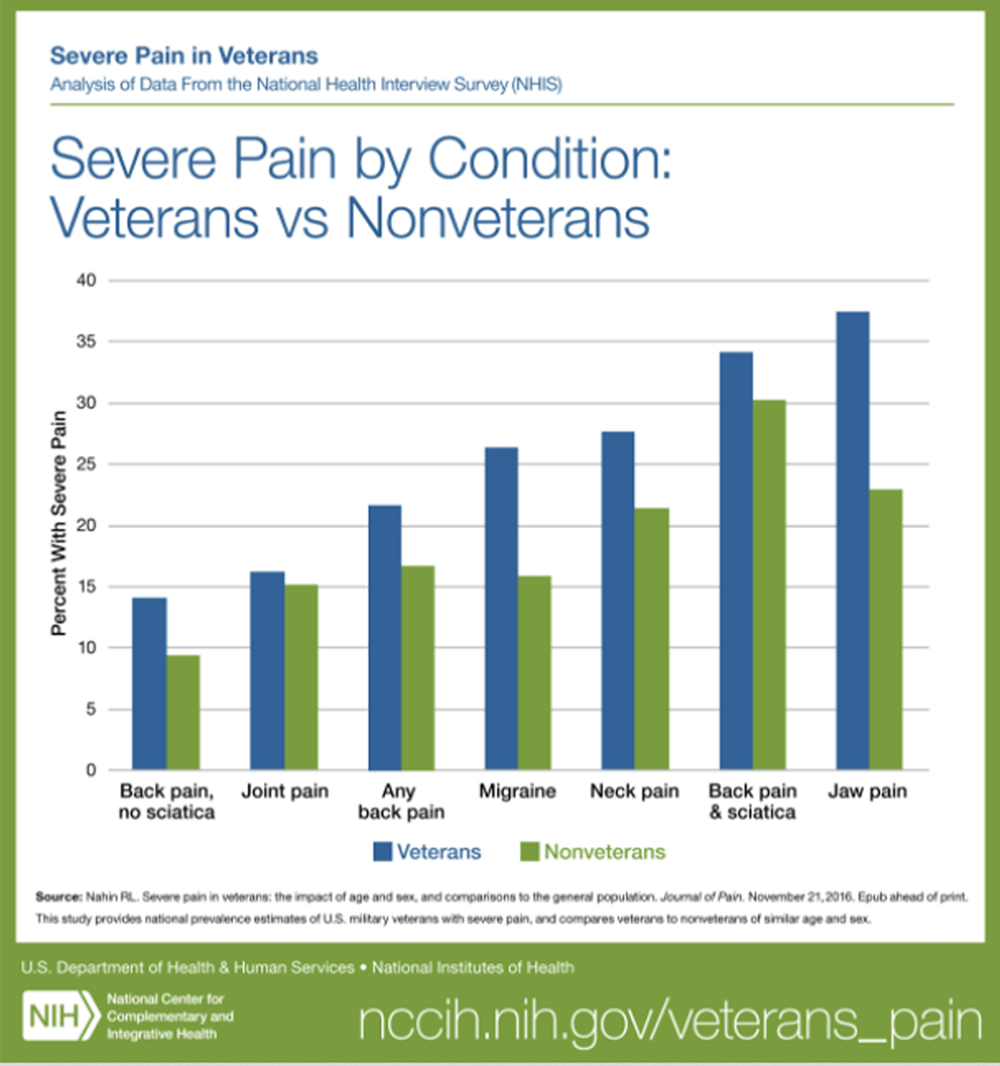We Built It, But Did They Come: Veterans’ Use of VA Healthcare System-Provided Complementary and Integrative Health Approaches
SOURCE: J Gen Intern Med 2022 (Nov 30); 1-8
Stephanie L. Taylor, PhD, Hannah M. Gelman, PhD, Rian DeFaccio, MS, Jamie Douglas, MA, Matthew J. Hawrilenko, PhD, Nathan K. McGinty, BA, Adam Resnick, PhD,et al.
Center for the Study of Healthcare Innovation,
Implementation and Policy, Health Services Research & Development,
Greater Los Angeles VA Healthcare System, MC 151,
11301 Wilshire, Bldg. 206, 2nd Floor,
Los Angeles, CA, 90073, USA.

FROM: Nahin ~ Pain 2017
Background: Interest in complementary and integrative health (CIH) approaches, such as meditation, yoga, and acupuncture, continues to grow. The evidence of effectiveness for some CIH approaches has increased in the last decade, especially for pain, with many being recommended in varying degrees in national guidelines. To offer nonpharmacological health management options and meet patient demand, the nation’s largest integrated healthcare system, the Veterans Health Administration (VA), greatly expanded their provision of CIH approaches recently.
Objective: This paper addressed the questions of how many VA patients might use CIH approaches and chiropractic care if they were available at modest to no fee, and would patients with some health conditions or characteristics be more likely than others to use these therapies.
There are more articles like this @ our:
Design: Using electronic medical records, we conducted a national, three-year, retrospective analysis of VA patients’ use of eleven VA-covered therapies: chiropractic care, acupuncture, Battlefield Acupuncture, biofeedback, clinical hypnosis, guided imagery, massage therapy, meditation, Tai Chi/Qigong, and yoga.
Participants: We created a national cohort of veterans using VA healthcare from October 2016-September 2019.
Key results:
Keywords: complementary and alternative medicine; complementary and integrative health; meditation; veteran; yoga.
From the FULL TEXT Article:
INTRODUCTION
Interest in complementary and integrative health (CIH) approaches for managing wellness and health continues to grow. [1] These approaches include meditation, yoga, and acupuncture. The evidence of effectiveness [2–12] for some CIH approaches for health has increased in the last decade, especially for pain, leading many to be included in the Department of Health and Human Services national pain management strategy [13] and American College of Physicians’ pain management clinical guidelines. [14] The search for non-opioid pain management options has further spurred increasing demand for CIH and other nonpharmacological therapies.
The Veterans Health Administration (VA), the nation’s largest integrated healthcare system providing care to over 9 million patients a year, is in the midst of transforming to a Whole Health System of care. [15] This is a shift from focusing on episodic, disease-centered care to engaging and empowering patients throughout their lives to take charge of their life and health, emphasizing well-being and self-care along with conventional care and CIH approaches. This recent shift, backed by veteran demand [16] and strong support from Congress and VA leadership [17], has led to a great interest in implementing CIH programs across the VA. [17, 18] Since 2016, VA has been providing CIH approaches to its patients as part of the medical benefits package. VA has been providing chiropractic care as allopathic treatment since the early 2000s. Our 2017–2018 national survey of VA’s healthcare system showed CIH programs proliferated throughout the VA, although not every CIH approach was available at every VA medical facility at the time. [19] However, researchers have not yet examined utilization of these approaches in the VA nationally.





Leave A Comment